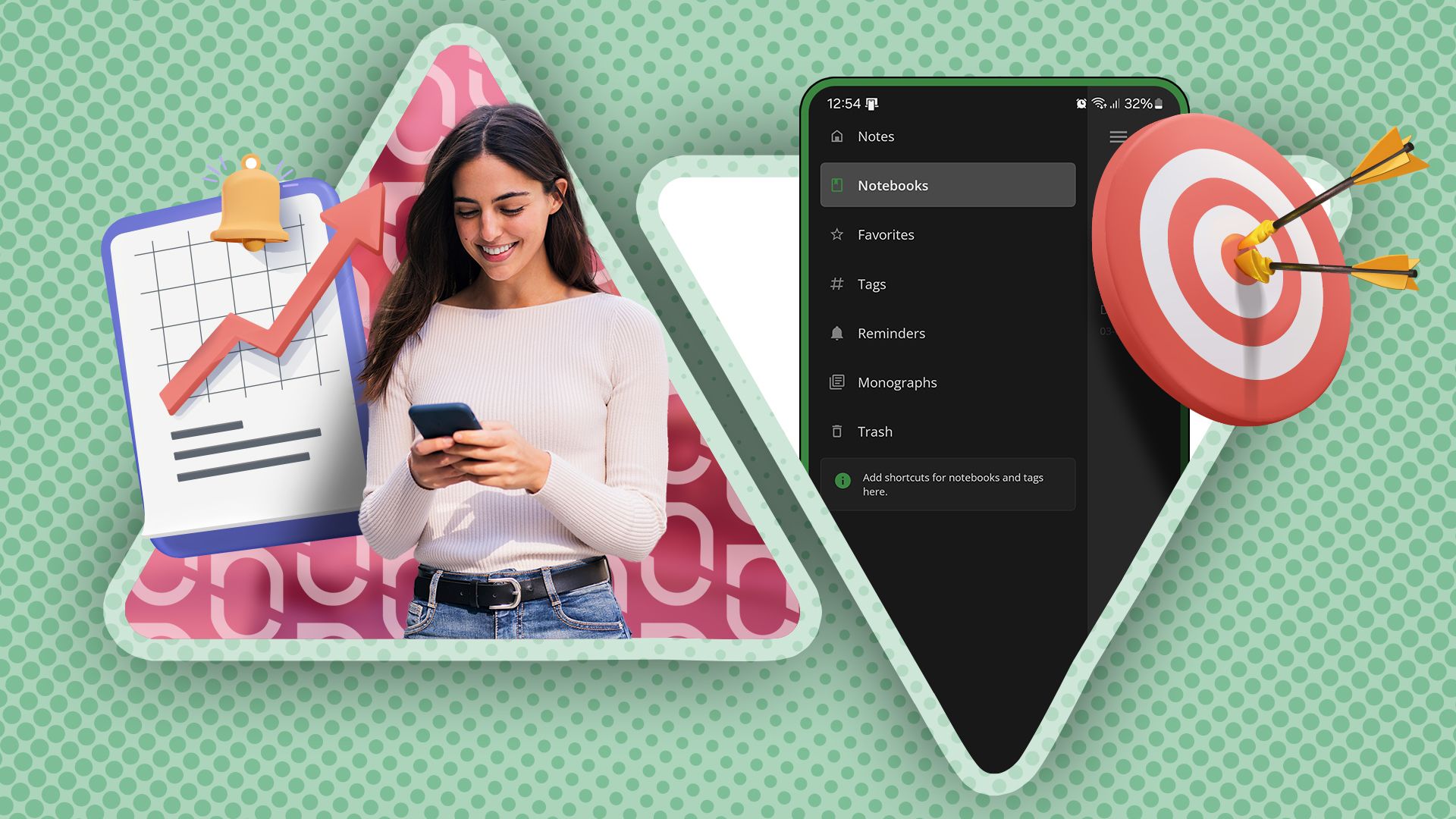Obsidian has been my go-to for capturing ideas, drafting articles, and creating project outlines. I’ve also relied on TickTick for habit tracking and task management.
However, juggling two apps on my phone meant shifting between notes and to-dos, which often broke my flow.
It made me wonder: could TickTick handle both? More importantly, could it replace Obsidian, my default tool for capturing thoughts, brainstorming articles, and keeping my digital notes organized?
I decided to find out by moving my entire workflow into TickTick for a week. Here’s how it went.
From Obsidian’s vault to TickTick’s lists
Trying to recreate my Obsidian setup
Obsidian stores everything as markdown files in folders, while TickTick relies on tasks, checklists, and simple text notes.
To simulate my Obsidian setup, I recreated my article outlines as long-form tasks with subtasks in TickTick. I converted idea dumps into quick notes within TickTick’s Notes section.
Moving to TickTick meant no backlinks, graph view, and nested markdown folders. Instead, the home screen featured a clean Today view, displaying my tasks, habits, and events.
TickTick excels at managing tasks
It’s perfect for logging habits and to-do lists
TickTick excelled at managing my daily tasks with features like priority levels, recurring tasks, and subtasks.
Natural language input lets you type Submit draft Friday 10 a.m. and have it instantly added to the calendar with the right due date and time.
I tried to replicate this setup in Obsidian using the Tasks plugin, Daily Notes, and Dataview. Although it worked somewhat, the setup felt awkward compared to TickTick’s native design.
The Calendar view showed my schedule alongside to-do lists. Meanwhile, the habit tracker nudged me to drink water, stretch, and review my goals.
Can TickTick handle long-form writing?
Don’t expect advanced note-taking options
TickTick is best known as a to-do manager, but its note-taking capabilities are better than you might expect. You can add long-form text to tasks, create standalone notes, and use formatting.
TickTick feels seamless for quick captures such as meeting notes, article ideas, or grocery lists. Its mobile and desktop apps sync flawlessly, and Markdown support makes formatting effortless.
However, as I pushed it further, limitations became obvious. TickTick lacks advanced features like bidirectional links, block references, and Graph View.
There’s no easy way to visualize connections between notes, which makes it harder to build a networked knowledge base like Obsidian’s.
TickTick delivers if your note-taking needs are light. It’s perfect for checklists, short outlines, and task-related details.
However, it lacked the fluidity of Obsidian’s Daily Notes. Instead of a knowledge base, I felt like I was building a pile of sticky notes with no structure.
Testing how TickTick functions as a productivity hub
Can it replace Obsidian?
A few days into my experiment, I noticed something unexpected: I wasn’t writing as much. With Obsidian, I’d often pop in to jot down random thoughts, outline future articles, or write meeting details. TickTick didn’t inspire the same behavior.
Part of it was the interface. TickTick is ideal for creating checklists, managing deadlines, and setting reminders. However, there’s no markdown or canvas for mapping ideas.
When I tried to outline a feature article, I struggled to move between high-level ideas and detailed notes.
In Obsidian, I’d break these into linked notes and zoom in or out. In TickTick, I got stuck scrolling through one long note or awkwardly splitting content into subtasks.
Trying workarounds and hacks
I had to find a middle ground
Determined to make TickTick work for notes, I tried a few workarounds. I used tags to group related notes. I also created a Notes section with individual tasks acting as note titles. I used subtasks for outlining.
This system worked, but it wasn’t convenient. I missed Obsidian’s graph view, where one note connected to dozens of others in unexpected ways.
The only upside was simplicity. There was no risk of over-organizing because TickTick didn’t let me.
The app worked best for quick notes such as grocery lists and meeting minutes.
TickTick is excellent for tasks, but not built for deep note-taking
TickTick is an excellent all-in-one productivity tool. It reduced app fatigue and helped me stay on top of my daily tasks. Its strength lies in blending tasks, reminders, and light note-taking in one seamless package.
For someone whose note-taking needs are limited to quick meeting notes or checklists, this may be sufficient.
Although TickTick can replicate many of Obsidian’s note-taking basics, it doesn’t quite match the depth and flexibility that a dedicated knowledge management app offers.
The app falls short for those who rely on Obsidian’s bidirectional linking, complex graph views, markdown customization, or plugin support.
If you value simplicity and staying on top of daily tasks, TickTick can do the job of several apps. But for deep note-takers, Obsidian is the better option.





… [Trackback]
[…] Read More Information here to that Topic: geeksforgeeks.org/can-ticktick-replace-obsidian-for-note-taking-i-put-my-entire-workflow-in-one-app-to-find-out/ […]
… [Trackback]
[…] Read More Information here to that Topic: geeksforgeeks.org/can-ticktick-replace-obsidian-for-note-taking-i-put-my-entire-workflow-in-one-app-to-find-out/ […]